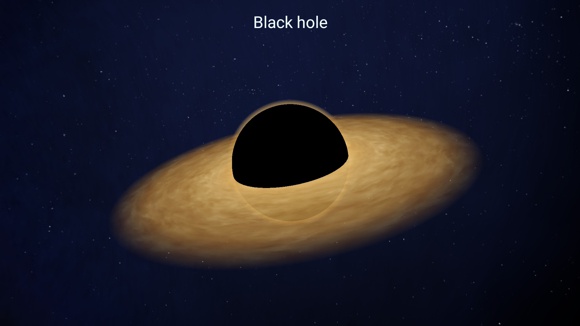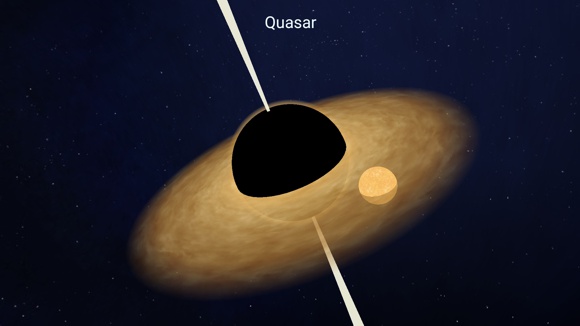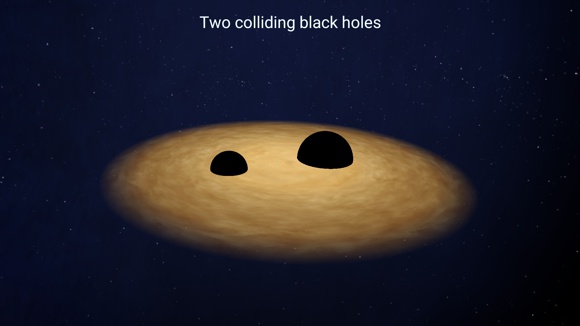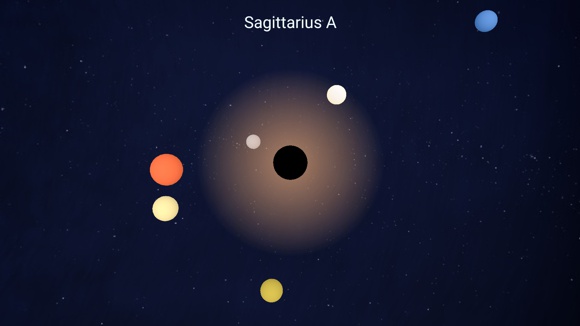|
|
|
About this appHere is a nice 3D simulator of the mysterious stars called black holes and of their dynamics; this app belongs to our series of educational apps focused on showing the Universe and its wonders. Black Holes includes five spatial scenes and scenarios related to the various types of black holes we have observed until now, from regular to supermassive ones (as the black hole located at the core of the Milky Way galaxy). Imagine you are traveling in a fast spaceship that has reached this 'dark' star, now directly observing its accretion disk and the orbiting bodies. The textures we have used in this utility are downloaded from solarsystemscope.com; however, all of them were tuned a little bit for visual reasons. The detailed information about this type of stars come from wikipedia.org and other public sources, the background music from the usual website: www.dl-sounds.com. This app is mainly designed for tablets (the landscape orientation is recommended), but it works fine on the modern phones too (Android 6 or newer). Short presentation video |
|
|
How it worksOnce the introductory quote is displayed and the text is converted to spoken words, you may tap anywhere on the screen and the main menu of the application will become visible. Now you may select any cosmic scene (buttons 1 to 5), start/stop the auto-rotation and the cosmic sounds/speech. Also, you can zoom in or zoom out the cosmic scenes, as you like. If there are orientation sensors on your mobile device, a gyroscopic effect will be present all the time, rotating the image according to your moves. Moreover, a tap on the Goggles can offer you a VR experience (a Cardboard or similar device is needed). The current scene (no time limit) or all scenes presentation (30s each) can be selected by pressing the respective radio buttons during the 15-second interval before the VR mode is entered. To exit the VR mode make a long tap anywhere on the screen. A double tap on the screen will toggle the Menu on and off, while Info displays basic information about the stars of the currently selected scene. |
|
|
|
Scenes
1. The first scene shows a simple, ordinary black hole of stellar mass and its rotating accretion disk (very likely to exist around this type of stars). 2. Now you can see a Quasar, a supermassive black hole (millions to billions of times the mass of the Sun) that is surrounded by a gaseous accretion disk. Two luminous, powerful plasma jets are emitted from the two poles of the star. Moreover, an ordinary star (whose orbit is very close) may be consumed in this process. 3. Two small black holes and their colliding process are the subject of this scene. The merger takes about 15 second, while these stars orbit closer and closer at increasingly speeds. In the end, the two black holes meet and merge, resulting a single, but bigger star. 4. Sagittarius A* is the location of a supermassive black hole at the center of the Milky Way. There are six stars orbiting near this black hole, and all their trajectories may be viewed in this scene (artist conception). 5. Imagine a binary star system in which the two stars (black holes, neutron stars) are revolving each other on gradually shrinking orbits. Each body emits gravitationally waves until the merger moment, and this type of radiation can be seen while propagating away from the star. Global features - special software optimization to lower the power consumption - simple commands - this app is very easy to use and configure - zoom in, zoom out, auto-rotate function - high definition pictures, background music - no ads, no limitations - VR mode and gyroscopic effect |




